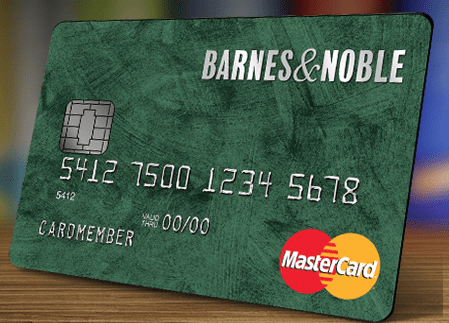2017 Comparison Review: Gap Credit Card vs. JCPenney Credit Card vs. Barnes and Noble Credit Card vs. Amazon Visa Credit Card
Nearly every retail store now offers their own credit cards. All new lines of credit should be approached with due caution and research, though these store cards are often incredibly beneficial for frequent and loyal shoppers.



Image Source: Pixabay
Four of the most popular retail credit cards are the Gap credit card, JCPenney credit card, Barnes and Noble credit card, and the Amazon.com credit card.
With so much information floating around about rewards, benefits, rates, and terms, it can be difficult to pinpoint the best retail credit card for you. Before choosing a credit card, it’s important to understand exactly what these cards are offering.
Our review will take a detailed, in-depth look into each card, highlighting the unique advantages and disadvantages of these credit cards.
With this comparative review, each consumer will be well-equipped to finding the retail credit card with the highest value.
The Basics: Co-Branded Credit Cards vs. Store Charge Cards
There is a confusing array of options when it comes to choosing a line of credit with your favorite retailer. Essentially, these lines of credit can be broken down into two separate categories:
- Co-branded credit cards: These are sponsored by a retailer and backed by a major credit card provider. Having a Visa, MasterCard, or American Express logo attached—like with the Amazon Visa credit card—means that these cards can be used for all purchases.
- Store charge cards: Store charge cards are lines of credit that are designed for use in-store. They are sponsored and backed by the retailer, so they can’t be used on outside purchases. The JCPenney credit card is a good example of a store charge card, as the JCPenney card can only be used for in-store purchases.
If you spend a significant amount of money at JCPenney, then the limitations of the JCPenney credit card are probably not going to be an issue. In contrast, the flexibility of the Barnes and Noble credit card may align closer to your personal spending habits.
Whether you choose a co-branded credit card or a charge card, it’s likely that you’re choosing to support a retailer that is already providing value for you.
The key is to understand which category of credit card your retailer is providing, and how to get the most out of your rewards and benefits.
See Also: Compare Credit Cards | Ranking | Top Credit Cards (Comparison & Reviews)
Comparison Review List
The list below is sorted alphabetically (click any of the names below to go directly to the detailed review section):
High-Level Comparison Table
| Credit Cards | Cash Back Rewards | Intro APR Offer? | Sign-Up Bonus? |
Amazon.com Rewards Visa Card | 1%–3% | None | $50 gift card |
Barnes & Noble MasterCard® | 1%, 2%, or 5% | 0% for 15 months on balance transfers | $25 gift card |
Gap Inc. Visa® Card | 1% or 5% | None | 15% off first purchase |
JCPenney Card | 1% | None | 15% off first purchase |
Table: The above list is sorted alphabetically
What to Consider Before Opening a Line of Credit
Co-branded credit cards and store charge cards can offer high amounts of value for consumers. The Gap store card, Barnes and Noble card, JCPenney credit card, or the Amazon Visa credit card all provide specific value to reward dedicated shoppers.
For those who focus their spending on specific retailers, these lines of credit can create opportunities for exclusive savings through coupons, promotional offers, shopping events, and rewards programs.
The difference between traditional credit cards and co-branded credit cards is that the benefits and rewards will be primarily focused on in-store spending. Thus, there are a few features to consider before opening a line of credit through a major retailer:
- Annual Percentage Rate (APR): Co-branded credit cards tend to come with high APR percentages. This determines the interest rate that applies when a balance is not paid on or before the due date. Depending on your spending habits, APR rates could make a big difference in the affordability of a card. Before signing up for the JCPenney credit card, you’ll want to consider the JCPenney credit card APR.
- Rewards System: Part of the value of co-branded credit cards comes from the rewards system. No matter what card you choose, make sure that the rewards system can provide value for your shopping habits. For example, while the Barnes and Noble card can be used for outside purchases, rewards from the Barnes and Noble credit card focus purely on in-store spending.
- Promotional Offers: Signing up for a co-branded credit card or a charge card can often make large purchases much more affordable and financially feasible, increasing the value of the card. For example, although the JCPenney card applies only to in-store purchases, consumers may want the special financing from the JCPenney credit card for larger purchases.
Don’t Miss: Top Gas Credit Cards | Ranking | Best Credit Cards for Gas Rewards & Points
All-in-One Change Management Tools
Top Rated Toolkit for Change Managers.
Get Your Change Management Tool Today...
Amazon.com Rewards Visa Card Review
If you’re considering signing up for the Amazon Visa credit card, you’re probably making most of your purchases online. For shoppers who want high rewards online, the Amazon.com Rewards Visa Card is a fantastic option.



Image source: Amazon
Rates & Terms
Before signing up for the Amazon Visa credit card, there are a few key rates and terms to know. These include:
- APR percentages: For purchases and balance transfers, the APR falls within a range of 14.49%-22.49%. Falling far below the national average APR of 23.84%, the Amazon.com Rewards Visa Card is much more affordable than most.
- Annual fees: With no annual fee, managing a line of credit becomes much easier. As an additional benefit, cardholders are not charged for exceeding their credit limit.
Rewards & Benefits
For consumers looking for a wholly beneficial and worthwhile co-branded credit card, rewards and benefits are key factors. Ultimately, the value of the card is determined by the rewards program, for in-store and out-of-store purchases.
Comparatively, the Amazon Visa credit card comes with a simple rewards structure that is meant to provide high value for regular Amazon.com shoppers:
- Competitive cash back rates: The Amazon.com Rewards Visa Card allows for 3% cash back on Amazon purchases and 2% on gas stations, restaurants, and drug stores. All other purchases earn 1%.
- Multiple redemption options: Points can be redeemed at any time toward purchases on Amazon, cash back, gift cards, or travel.
- $50 Amazon.com gift card upon approval: Upon card approval, an automatic $50 credit is applied to your Amazon account, creating an immediate benefit.
Final Considerations
With a competitive APR and no annual fees, the Amazon Visa credit card is an affordable line of credit. As a co-branded credit card, the rewards program focuses on spending both in and out of store, making it easy to earn points and save money.
Still, since the highest rewards percentage comes from Amazon.com purchases, the best way to see the benefits of this card is to be a regular online shopper.
Points can be easily redeemed for online purchases, making for a hassle-free online redemption process.
Related: Average Credit Card Interest Rates | Compare & Understand the Best Credit Card Rates (Lowest, Highest, and More)
Barnes & Noble MasterCard® Review
For avid readers, the Barnes and Noble credit card is a valuable option for a co-branded credit card. The Barnes and Noble card rewards cardholders for in-store and out of store spending, making it ideal for consumers who want versatility.



Image source: Barnes & Noble
Rates & Terms
The Barnes and Noble credit card comes with a few unique rates and terms to consider, including:
- 0% balance transfer APR: Cardholders who choose to transfer a balance can enjoy 15 months of no interest with the Barnes and Noble credit card. Afterward, the APR falls within a range of 14.24%–25.24%.
- No annual fee: While the APR may be slightly higher with the Barnes and Noble credit card, the no annual fee could increase affordability and value.
Rewards & Benefits
When choosing between co-branded credit cards, decisions ultimately come down to rewards and benefits. The best retail credit cards offer high value for loyal shoppers through their rewards programs. Rewards for the Barnes and Noble card include:
- $25 gift card for every 2,500 points earned: Each dollar spent on the Barnes and Noble credit card earns one point.
- Earn points outside of the store: Using the Barnes and Noble card on restaurant purchases earns 2x points, while all other purchases earn 1x.
- 5% back on in-store purchases: Using the Barnes and Noble credit card for in-store purchases provides the best value, as in-store purchases earn a whopping five times more points.
Final Considerations
The Barnes & Noble MasterCard® is the only co-branded card in this review to offer an introductory APR, making it a great option for those looking to transfer a previous credit card balance.
With 5% back on in-store purchases, it also provides the highest rewards for store loyalty.
Still, one potential downfall is that the rewards system focuses purely on in-store spending with the Barnes and Noble credit card. Rewards points are either applied as a statement credit or a gift certificate, rather than cash.
To get the most value out of the Barnes and Noble credit card, cardholders will need to be frequent and loyal shoppers. Otherwise, the rewards points restrictions may decrease the overall value of the card.
Popular Article: Best Reloadable Debit Cards | Guide | How to Find and Get Top Reloadable Prepaid Cards



Gap Credit Card Review
Not to be confused with the GapCard, the Gap Inc. Visa® Card is a co-branded Gap credit card that can be used both in and out of store.
With competitive Gap credit card rewards and exclusive Gap credit card promotions, the Gap store card is one of the most dynamic options on this list.



Image source: GAP
Rates & Terms
This Gap.com credit card keeps rates and terms as simple and as accessible as possible. Key rates to keep in mind include:
- APR percentage: At a fixed rate of 25.24%, the Gap credit card has one of the highest interest rates. Before applying for the Gap store card, consumers should analyze their spending habits and ensure that the Gap.com credit card will be affordable over time.
- Late payment fees: Payments made after the due date on the Gap credit card will incur up to $37 in late fees.
Rewards & Benefits
Gap credit card rewards are some of the most comprehensive that we have seen thus far. Part of this comes from the ability to earn and redeem points through four different retailers: GAP, Banana Republic, Old Navy, and Athleta.
The rewards and benefits of the Gap credit card include:
- Exclusive discounts: Gap card rewards offer 15% off the first Gap credit card purchase and special coupon offers for cardholders. The Gap.com credit card also allows for 10% off every Tuesday for online and in-store purchases.
- High rewards for in-store spending: In-store purchases with the Gap credit card earn 5 points for each dollar. Outside purchases can still earn points, with one point earned for each dollar spent.
- Coupons issued for points: Each time cardholders accrue 500 points through Gap credit card rewards, they earn a $5 gift certificate.
Final Considerations
With the ability to earn and spend Gap card rewards at four different stores, the Gap credit card is an incredibly versatile card.
Cardholders also have access to a wide array of opportunities for discounts, making the Gap credit card into an affordable and valuable option.
That said, the Gap store card APR is notably higher than other co-branded cards. Consumers should consider how high APR percentages can affect long-term affordability for the Gap credit card.
Still, depending on spending habits, the Gap card rewards may outweigh the high APR.
Read More: Best Credit One Credit Cards | Reviews | What You Should Know (Credit One Bank Credit Card Reviews)
JCPenney Credit Card Review
The JCPenney credit card is the only store charge card included on our review, which means it cannot be used on outside purchases. What makes it comparable to co-branded credit cards is that it offers a wide array of cardholder benefits to encourage in-store spending.
As a retail-oriented line of credit, the JCPenney credit card may be a worthwhile investment for those who prefer to focus their spending on department stores.



Image source: JCPenney Rewards
Rates & Terms
Before discussing the benefits of the JCPenney credit card, our JCPenney credit card review will outline a few key rates and terms. These include:
- APR percentage: Out of all reviewed credit cards, the JCPenney credit card APR is the highest. At 26.99%, the JCPenney credit card may cost more money over a long-term period.
- Late fees: Our JCPenney credit card review found that late payments can be charged fees up to $37 on the JCPenney credit card.
Benefits & Rewards
As a JCPenney credit card member, there are many exclusive benefits and rewards. These include:
- Three levels of membership: The JCPenney credit card rewards are either listed as basic, silver, or platinum. As membership and shopping increases from one level to the next, so do the rewards.
- Exclusive cardholder benefits: These include 15% off the first purchase, annual birthday gifts, special promotions, exclusive coupons, and shopping events for JCPenney credit card members.
- Special financing options: For large purchases, like furniture, fine jewelry, or mattresses, the JCPenney credit card allows for membership financing. Although the JCPenney credit card APR is high, the financing options through the JCPenney credit card may make larger purchases more affordable in the long run.
Final Considerations
While anyone can sign up for JCPenney Rewards, those with the JCPenney credit card will earn one point for each dollar spent.
Compared to one point for every two dollars without the JCPenney credit card, having the card is certainly a better way to earn points.
Still, with the high JCPenney credit card APR, consumers will need to balance out the rewards and the interest before applying for the JCPenney credit card.
The special financing offers may be worthwhile for larger purchases, but with little available information, our JCPenney credit card review cannot make a definitive judgement.









Conclusion: Amazon.com Rewards Visa Card vs. Barnes and Noble Credit Card vs. Gap Credit Card vs. JCPenney Credit Card
When looking for the best co-branded credit card or retail charge card, keep in mind that traditional credit card considerations should still apply. This means taking a close look at the APR, annual fees, and late fees.
These components will help determine whether cards like a Barnes and Noble credit card or an Amazon.com Rewards Visa Card will remain affordable over time.
While rates and terms will always play a large role, keep in mind that the most valuable aspect of these cards comes from their benefits and rewards.
Before choosing a Gap credit card or a JCPenney credit card, make sure that the benefits and rewards provide specific, attainable value that aligns with your spending habits.
There is no doubt that opening a line of credit through your favorite retailer can be a great way to unlock exclusive savings, discounts, and cardmember perks.
Evaluating the rates, terms, rewards, and benefits of each card is crucial to ensuring that a line of credit remains affordable, beneficial, and valuable over time.
AdvisoryHQ (AHQ) Disclaimer:
Reasonable efforts have been made by AdvisoryHQ to present accurate information, however all info is presented without warranty. Review AdvisoryHQ’s Terms for details. Also review each firm’s site for the most updated data, rates and info.
Note: Firms and products, including the one(s) reviewed above, may be AdvisoryHQ's affiliates. Click to view AdvisoryHQ's advertiser disclosures.





